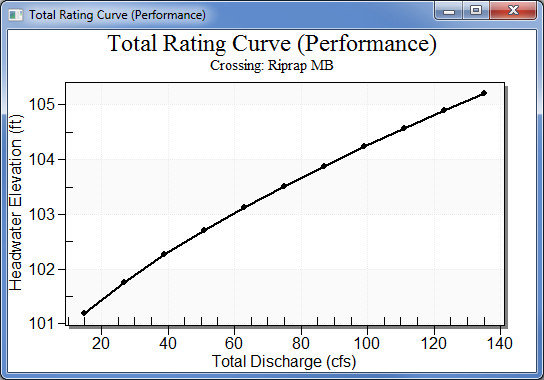HY8:Crossing Summary: Difference between revisions
From XMS Wiki
Jump to navigationJump to search
No edit summary |
No edit summary |
||
| Line 5: | Line 5: | ||
* '''Roadway Discharge''': total discharge overtopping the roadway. | * '''Roadway Discharge''': total discharge overtopping the roadway. | ||
* '''Iteration''': displays the number of iterations required to reach the convergence limit. | * '''Iteration''': displays the number of iterations required to reach the convergence limit. | ||
<blockquote> | <blockquote style="margin-top:0px; margin-bottom:0px;"> | ||
Note: there will be a column for the discharge through each culvert in the crossing. | '''''Note:''''' there will be a column for the discharge through each culvert in the crossing. | ||
</blockquote> | </blockquote> | ||
When the crossing summary table option is selected, | When the crossing summary table option is selected, it is possible to view the total rating curve for all culverts in the crossing. A sample rating curve is shown in the figure below. | ||
[[Image:HY8image TotalRatingCurve.jpg]] | [[Image:HY8image TotalRatingCurve.jpg]] | ||
Revision as of 15:28, 14 June 2016
The crossing summary table is important in showing the balance of discharge moving through the culvert(s) at the crossing and over the roadway. The following variables are displayed in the table:
- Headwater Elevation: the elevation of the headwater when the flow is balanced between the culvert(s) and roadway.
- Total Discharge: the sum of the discharge through the culvert barrel(s) and over the roadway.
- Culvert(1) Discharge: the balance discharge through all the barrels in the first culvert.*
- Roadway Discharge: total discharge overtopping the roadway.
- Iteration: displays the number of iterations required to reach the convergence limit.
Note: there will be a column for the discharge through each culvert in the crossing.
When the crossing summary table option is selected, it is possible to view the total rating curve for all culverts in the crossing. A sample rating curve is shown in the figure below.
